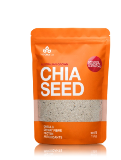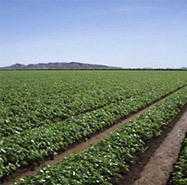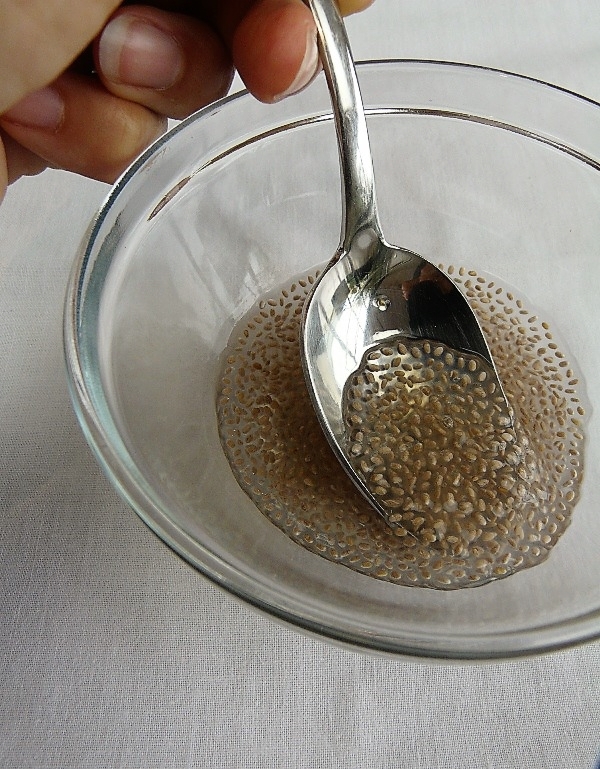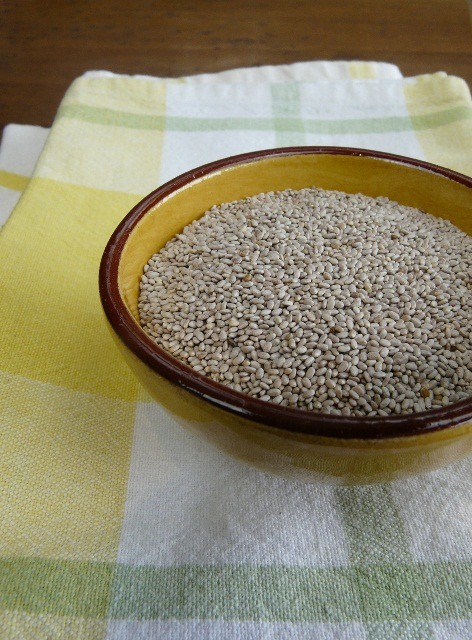- Home
- Blog
- Super Foods
- Super foods, the ultimate health foods – Chia
Super foods, the ultimate health foods – Chia
Written by Catherine Saxelby
on Monday, 21 September 2009.
Tagged: carbohydrates, fibre, food trends, protein, snacks, super foods, supplements, trends

When I first read about Chia, I thought "Yeh, sure, sounds way too good to be true." And the claims do sound amazing. Can such tiny seeds, smaller even than sesame or flax seeds, really be loaded with so much omega-3, fibre, protein and calcium that they get labelled a super food? In all honesty, I'd never heard of them before and with so many "new" discoveries, the hype around Chia seemed to a bit over the top.
History
Chia seeds (pronounced chee-ah) are new on the food scene but have a long history. For centuries, the Chia plant (Salvia hispanica) has been growing in its natural habitat of Central and South America. It was a highly valued oilseed crop by the Mayans, Aztecs and Southwest Native Americans as a staple food because of its energy and sustenance properties. When the Aztec civilisation ended, the seeds vanished from our kitchens ... until now. Today Chia seeds are grown in the Kimberley region of Western Australia and are appearing in health food aisles.
What do they look and taste like?
Chia seeds look like tiny sesame seeds and can be black, white or grey. They are sold in a packet, unprocessed. They have a neutral flavour and the growers say you can sprinkle them over or add them to just about anything - muesli, smoothies or yoghurt - without disturbing the final taste.
When combined with water they form a thick gel which helps make them a good mixer. I've been playing around with the Chia seeds I was sent and they're quite gelatinous - 15 minutes after adding a tablespoon to one cup water they form a thick jelly-like mass. Each seed appears to absorb water and become a globule of jelly - just like soft tapioca balls.
The Chia sites I've been searching all say to add this goop to your smoothies or whatever else (it's quite tasteless) so you get the beneficial soluble fibre. The only negative thing is that - unlike tapioca - each Chia seed retains a tiny fragment of hull (must be high in cellulose) so when you swallow it, you don't get a soft pleasant jelly. You get the jelly plus lots of tiny bits of "grit". To my taste, I'd rather eat them dry.
What's in Chia seeds?
- Like all seeds, chia seeds are high in fat especially the "good" fats. At around 30 per cent fat, they're lower than sesame seeds (50 per cent) or nuts but make up for this with an extraordinarily high level of omega-3 - unusual in the plant world.
- They have 18 per cent of the plant form of omega-3 called ALA which is around the same as linseeds (flaxseeds) at 22 per cent, making them one of the richest sources of ALA.
- Omega-3 is important for heart health and brain function. We usually get this from fish and meat, but plant sources are useful for counter-balancing the omega-6 we overdo.
- Their next biggest asset is their fibre content. At 37 per cent fibre, they are an outstanding source of fibre, in particular soluble fibre. They have the ability to absorb a high volume of liquid and become thick and gelatinous, thanks to some mucilages. This, coupled with their low level of available carbohydrate, makes them slowly absorbed.
Protein plus calcium
Chia seeds contain 15 per cent protein - as much as wheat yet they're gluten-free - and a variety of vitamins, minerals and trace elements including folate, phosphorus, iron, manganese, copper and potassium.
Like almonds and sesame seeds, they have a surprisingly high content of calcium (255mg per 100g compared to 120mg for milk), but how well this is absorbed is debatable. Don't believe all you read on the Chia marketing sites about how much better Chia is than milk. The same can be said for their magnesium, iron, zinc, and copper.
To my thinking, Chia have the crunch and appearance of poppy seeds with the omega-3 of flaxseeds.
Ways to use Chia seeds
- Sprinkle over cereal and muesli.
- Use them to coat rissoles, meatloaf or burgers - they add a pleasant crunch to the exterior just like poppy seeds
- Because of their neutral taste and light colour, white Chia seeds make an ideal part-replacement for white flour in home baking. Replace 2 tablespoons of the flour with white Chia seeds.
- Mix 1 or 2 tablespoons of the seeds into one cup of water and add the gel to smoothies, juices, yoghurts and soups.
How Chia compares
Compare Chia to sesame and flaxseeds and you'll notice that Chia has little carbohydrate, a hefty fibre of 38%, less fat than the others (which means less kilojoules/calories) yet as much ALA as flaxseed (see 18% almost as high as 22%).
| Seed |
Carb % |
Fibre % |
Fat % |
LA % |
ALA % |
kJ |
|---|---|---|---|---|---|---|
| Chia seeds | 6 | 38 | 30 | 6 | 18 | 2050 |
| Sesame seeds | 12 | 12 | 49 | 21 | <1 | 2400 |
| Flaxseeds | 2 | 27 | 42 | 6 | 22 | 2235 |
From USDA Nat Nutrient Database for Std Reference Release 21 (2008). LA is linoleic acid, an omega-6 fatty acid. ALA is alpha-linolenic acid, an omega-3 fatty acid. http://www.ars.usda.gov/ba/bhnrc/ndl
Growing Chia
Over the past five years, the Kimberley region in Western Australia has become the world's largest producer of Chia. It has the ideal latitude and climate for growing Chia.
More info on where to source chia
A gel made from chia may replace as much as 25 per cent of the oil or eggs in cakes without affecting taste, says a study from the Journal of the American Dietetic Association. Chia gel was used to replace 25%, 50%, and 75% of oil or eggs in a control cake formulation and rated by 75 panelists on a seven-point hedonic scale. There was a slight drop in the volume of the chia cakes but no difference in taste or volume. June 2010, 110, 6, 946-949. DOI: 10.1016/j.jada.2010.03.011
 Read up on the Aussie company that put chia on the plate and its commitment to sustainable farming. Currently they are the world's largest producer of raw chia seed.
Read up on the Aussie company that put chia on the plate and its commitment to sustainable farming. Currently they are the world's largest producer of raw chia seed.
 Check out an agricultural perspective from ABC TV Landline's website. This interview shows how chia is grown in the Ord River valley in the Kimberley in Western Australia.
Check out an agricultural perspective from ABC TV Landline's website. This interview shows how chia is grown in the Ord River valley in the Kimberley in Western Australia.

June 2010, 110, 6, 946-949. DOI: 10.1016/j.jada.2010.03.011
You may also be interested in...
Foodwatch
The Good Stuff
The Boring Stuff
© 2025 Foodwatch Australia. All rights reserved
Website by Joomstore eCommerce







